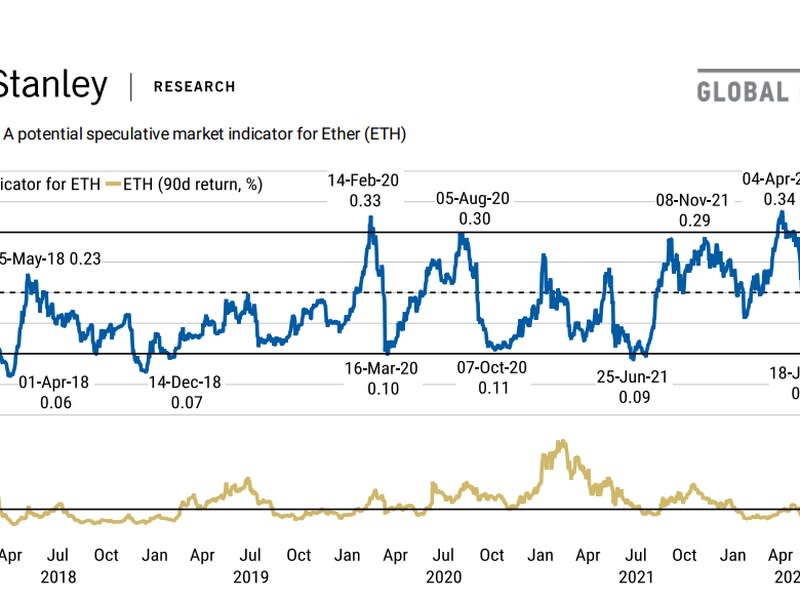Morgan Stanley’s New PAVA Indicator Divides ETH Users Into ‘Believers’ and ‘Speculators’

Morgan Stanley has introduced a new speculation indicator – a tool called PAVA (price-adjusted volume per address) that uses speculative activity among traders to forecast ether (ETH) pricing.
The indicator, calculated by dividing the cryptocurrency price in U.S. dollars by the ratio of the blockchain transaction volume to active wallet addresses (90-day average), will allow investors to estimate ether price trends, particularly when undergoing extreme market lows.
“The key assumption for the PAVA indicator is that the blockchain, or specifically the layer 1 blockchain, is valued as a network,” Morgan Stanley wrote.
The indicator differentiates price movement based on market fundamentals from price movement based on network usage, and divides crypto market participants into two groups: believers and speculators.
Believers are confident in Ethereum’s long-term value and participate in on-chain protocols such as staking and decentralized lending, which increases network transaction volume and results in a lower PAVA value.
Speculators are less well-integrated into the Ethereum ecosystem and react to short-term price movement, causing increases in active wallet addresses to outpace increases in transaction volume and resulting in a higher PAVA value.
Morgan Stanley said that the indicator is stronger at identifying lower, than higher, market extremes. PAVA has been cyclical in past years and tends to bottom out below 0.1 and peak above 0.29. The indicator recently dipped below the low threshold on June 16, two days before ETH hit a bottom of $880.18.
